























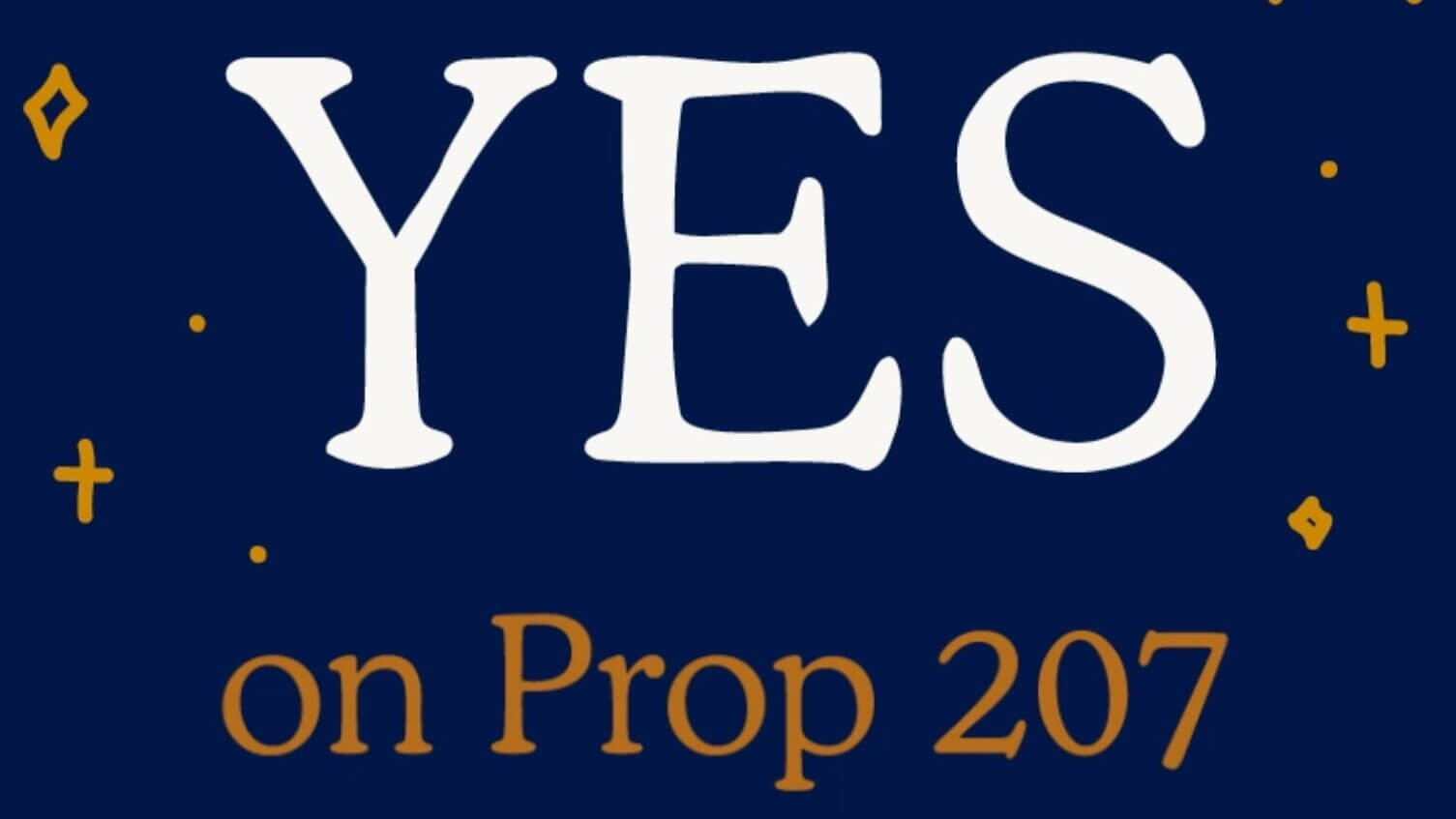
With the election fast approaching, it’s time to talk about recreational cannabis legalization and voting yes on Prop 207.
We need to create a safe environment for cannabis consumption and fix the outdated penalties for cannabis possession, as Arizona is the only state in the country where first-time, low-level marijuana possession is still a felony. Below we highlight what is and isn’t covered in this proposition, why cannabis legalization is the way forward, and how you can help make the cannabis industry a better and more inclusive place.
What does Prop 207 involve?
Allows adults (aged 21 or older) to possess one ounce of cannabis, grow up to six plants, and consume recreationally within the state of Arizona.
The same 16% tax that exists on cigarettes and alcohol will be imposed on cannabis. The revenue from the tax will go towards funding roads and freeways, community colleges, mental health programs, public safety and substance abuse programs.
People previously convicted of possessing less than one ounce of cannabis or growing six or fewer plants would be able to petition to have their record expunged in 2021.
What wouldn’t be allowed?
Cannabis use would remain illegal in public places, such as parks, sidewalks, and restaurants.
Operating a vehicle, such as a car, boat, or plane, while being impaired would remain illegal.
Possessing more than one ounce but less than 2.5 ounces would result in a petty offense.
The proposition won’t change an employers’ right to maintain a drug and alcohol-free workplace.
Advertising to children and the sale of gummy bears, gummy worms and other products that resemble kids’ candy would be banned to protect children.
What can you do?
Send this to someone you know that’s on the fence about Prop 207.
Support organizations that help facilitate record expungement such as National Expungement Week and Last Prisoner Project.
Vote YES on Prop 207
The future of cannabis is recreational legalization. Vote yes on Prop 207 to ensure cannabis justice and record expungement, the generation of new tax revenue to make AZ even better, and giving adults the right to choose if they want to experience cannabis in a safe way. For more information, visit Smart and Safe.









This week we chatted with Lisa Short, an Account Executive at Rove, to learn a little more about what makes their products the leading cannabis cartridges in Arizona.
Hi Lisa! Can you tell us about the story behind Rove?
In 2016, the Rove founders realized that long-term success in an immature cannabis industry required a higher degree of self-sufficiency. With that focus, Rove built its own manufacturing facilities, created unique packaging, developed a fully redundant supply chain, and created proprietary manufacturing processes. This “do it yourself” mentality has served Rove well through periods of rapid growth and industry change.
Our goal is to provide customers with the highest quality products that taste great and are created with them in mind. As cannabis continues its journey toward nationwide legalization, Rove is determined to bring its best of class products to discerning cannabis fans, through top-notch product and local community experiences.
What makes Rove products unique?
At Rove, we believe in honesty, simplicity and transparency so our carts are a unique experience really from start to finish from packaging to first draw.
For our customers, the cornerstone of Rove products is a proprietary CO2-extracted concentrate process, developed in collaboration with the leading CO2 extraction equipment supplier in the industry. Cannabis for every ROVE product is grown, dried, extracted, packaged and distributed according to our guiding principles. Combined with our proprietary hardware produced in ISO-certified facilities, our final products are the most precise, reliable and of the highest quality.
What are the best uses for your products?
Whether you’re just curious and new to cannabis oil, or a seasoned cannabis connoisseur, Rove has something for everyone. With a wide range of products, spanning from CBD blends to full spectrum, single sourced flower, every strain contains organically derived terpenes and each have unique benefits.
By visiting Rove’s website you can find a breakdown of the terpenes for each of our strains. This makes it extremely easy for customers to learn more and identify which strain would suit them best.
Any finals notes you’d like our readers to know?
In early 2019, we launched a QR authentication app called Rove Rewards. Rove was the first major cannabis vape brand to offer an authentication program to protect the safety of customers, the business of our retail partners and work to eradicate vape counterfeiting. Every single real Rove product is labeled with a unique QR code which can be scanned to verify authenticity, to ensure that all of our Rove fans have the safest and best experience possible.
Another fun fact about Rove: Our Formulation Specialist in California who develops our strain profiles, went to culinary school and works incredibly hard to make sure customers get what they want and deserve: Mouth watering flavors paired with an exceptional cannabis experience. He has spent years perfecting the layers of delicious flavors from fruity to a more natural taste to make sure we have a product to satisfy even the most discerning tastebuds.
We genuinely care about our customers and depend on their feedback to ensure every experience with us is great. Our instagram account and Rove Rewards are run by real people who love to interact with our followers and loyal customers. Lastly, There is a direct line from our founders to employees because it is important to them to know how we can evolve to create the best product for our customers.
Visit us to check out Rove’s products!








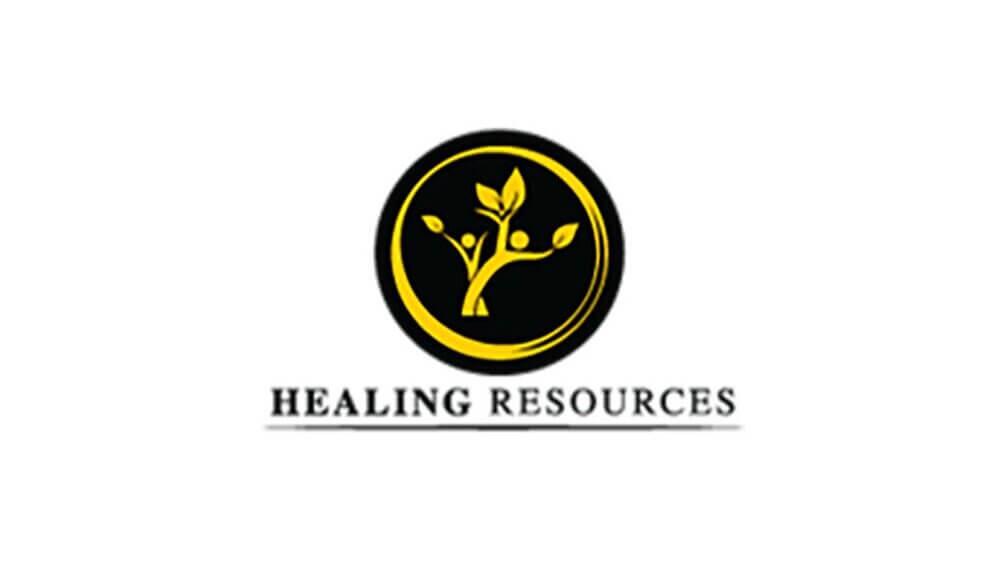
If you’ve been feeling heavy recently, know that you are not alone. While everyone reacts differently to feeling down, we know that many of our patients are seeking out natural remedies that are proven to work. With that, we are excited to welcome Healing Resources, Arizona’s Premier CBD brand, to our shelves. To celebrate we chatted with Gavin Carpenter, the Founder and VP of Sales of Healing Resources, to learn more about CBD and what makes Healing Resources stand out in a saturated market.
Sunday Goods: Hey Gavin! First of all, could you explain to our audience what CBD is?
Healing Resources: Sure thing! Cannabidiol, or CBD, is a promising cannabinoid found in agriculturally grown hemp; a plant that has been used for over 10,000 years and is revered as one of the most versatile plants in the history of the Earth. It has been recognized for its benefits on human and animal health and can affect nearly every biological process. CBD is one of many compounds found in the cannabis plant, but it is non-intoxicating, meaning it will not impair you. Who would have guessed that the part of the plant that doesn’t get people high would become such a major player in today’s Cannabis revolution?
SG: What is Healing Resources?
HR: Healing Resources, based in Scottsdale AZ, is a vertically integrated hemp company that has been around since the beginning stage of the CBD/Hemp revolution which began shortly after the signing of the 2014 Agriculture Act, also known as the Farm Bill, which effectively lifted the almost 80 year ban on hemp cultivation, processing, and extraction in the United States. As a leader in the US hemp industry, Healing Resources manages their entire supply chain in house – cultivation, processing, extraction, formulation – from Seed to Shelf. I founded Healing Resources in 2015 under three main principles: Quality, Consistency, and Sustainability. Quality product, Consistent approach to their craft, and Sustainable business practices up and down its supply chain. With nearly 100 Full Spectrum & THC Free products in the marketplace nationwide, Healing Resources’ products cover all methods of delivering the highest quality cannabinoids into the body.
SG: What makes Healing Resources unique?
HR: Healing Resources is unique in a number of ways; first being that it was part of the initial pilot program enacted under the 2014 Farm Bill, with thousands of CBD and Hemp companies now saturating this industry – it speaks volumes that Healing Resources was one of the first to get involved. Secondly, Healing Resources prides itself on having a product assortment that covers all methods of delivery, each with the highest levels of bioavailability based on what customers are looking to achieve with CBD. Tinctures, capsules, topicals, inhalables and edibles, Healing Resources has something for everyone. Another unique part of its process is the way Healing Resources CBD products are formulated; using a specialized emulsification process that allows for faster absorption into the body which in turn allows for more accurate dosing. A majority of Healing Resources products have less than 5 ingredients, often less than three ingredients; and are made with all natural and organic ingredients whenever possible.
HR: What are the best uses for your CBD products?
SG: Without making any specific claims as to the potential benefits of CBD, we receive awesome feedback from customers that have achieved great benefit for a number of different conditions. CBD is miraculous in the fact that it is mild enough to be taken by perfectly healthy individuals just looking to feel good and live healthy and happy lives – and is strong enough to potentially help fight off some worse ailments that can affect the human body. There is a ton of information available about the benefits of CBD and we are happy to help answer any questions our new or existing customers have.
HR: What are your recommendations for dosing?
SG: Dosing is a very important part of the process when taking CBD; we recommend customers start with Healing Resources Full Spectrum Hemp Oil or THC Free tinctures that come with a metered-dose dropper to help customers find the dose that is right for them. We recommend starting with 0.5ml – 1ml held under the tongue for up to a minute before being swallowed with a beverage, continue this at least once a day for 10-14 days before changing your dosing. After that 10-14 day mark, we typically see that customers are starting to experience the effects of our CBD acting as “chemical messengers” throughout the body. If that is not a strong enough dose, we recommend slowly increasing that dosing over the course of a number of days to then understand the effects of it. Once a customer has found their dose, we have a wide variety of specifically dosed products ranging from 10mg CBD chewing gum and gummy bears all the way up to 50mg Full Spectrum and THC Free capsules. Healing Resources dedicated support staff is always here to help answer any specific questions about finding the right dose. An insider tip – enjoy your Healing Resources product with any type of good fats – dark chocolate, almonds, avocado, peanut butter, etc. to further boost the absorption and effect!
Interested in trying Healing Resources CBD for yourself? Then visit us in Phoenix! Customers do not need a medical card to purchase CBD, just order ahead and pick up in our lobby. One of our friendly cannabis concierge’s will be able to assist you upon arrival.








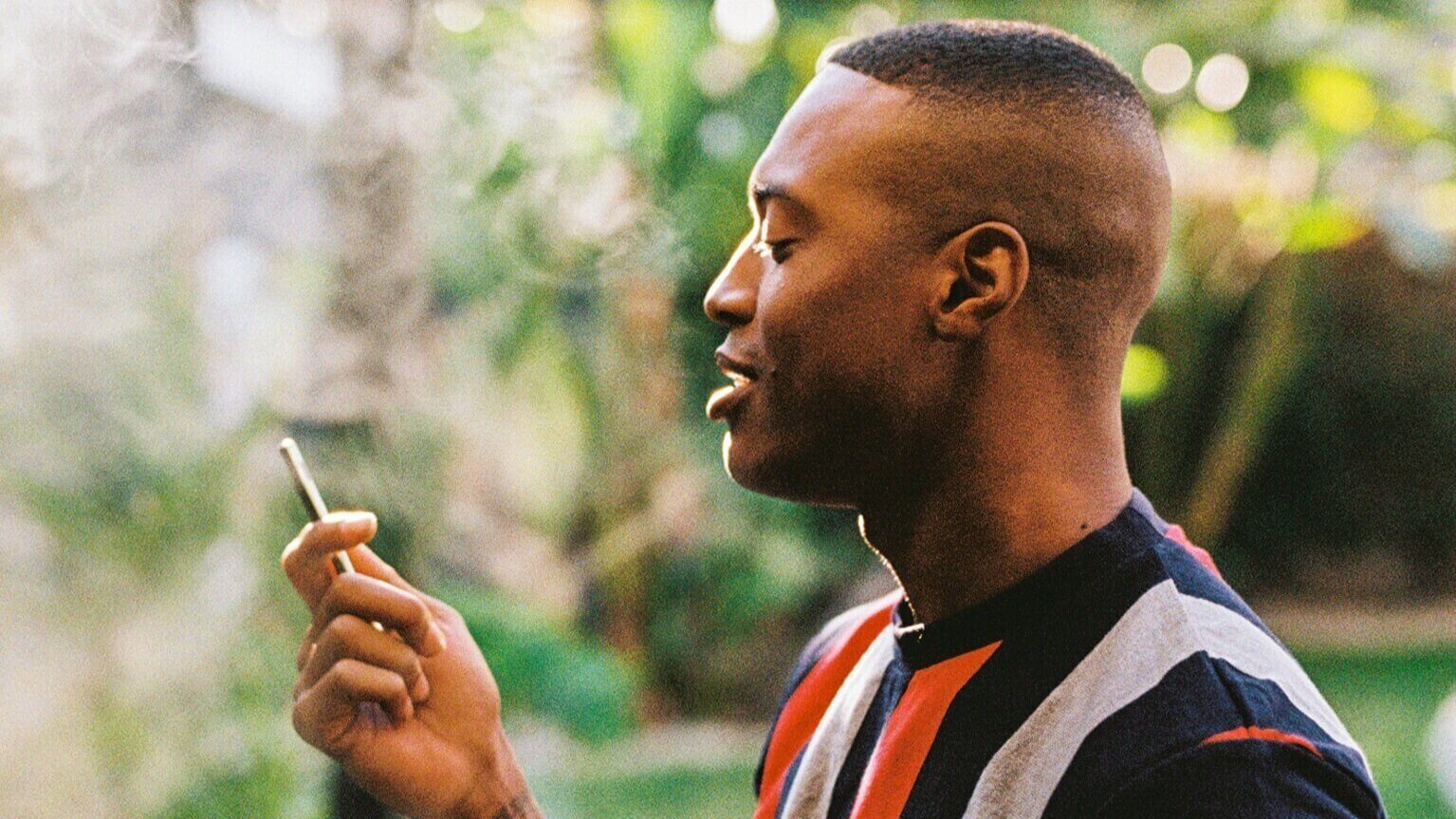
It was on this day, June 19th, in 1865 that federal troops arrived in Galveston, Texas to ensure that all enslaved people be freed, two and a half years after President Lincoln’s Emancipation Proclamation. Given the history of racism and inequality within cannabis, we wanted to take today to reflect on the history of cannabis in America, and how we can help pave a way forward.
Pre-Prohibition: 1600s – 1800s
The Jamestown settlers brought hemp to North America in 1611, and throughout the colonial period, hemp fiber was an important export. During the 17th century, all American colonies were required to grow hemp as it was one of the most predominant industrious materials in the world, even George Washington and Thomas Jefferson were known to have grown hemp.
By 1850, cannabis made its way into the US Pharmacopeia, which listed the plant as a treatment for numerous ailments including tetanus, rabies, alcoholism and opiate addiction, just to name a few. The hemp industry was undoubtedly flourishing, although it’s important to remember it was built through slave labor.
Propaganda and Prohibition: 1900 – 1940s
In the early 1900s, the public perception of cannabis began to shift as politicians joined forces with the cotton, steel, pharmaceutical, and tobacco industries. Propaganda was rife and shaped American’s views on cannabis forevermore. By 1931, 29 states passed anti-cannabis prohibition laws.
In 1936 the deceptive propaganda film Reefer Madness was released, depicting cannabis users as violent and deadly fiends. Other forms of media were quick to follow, selling falsehoods as truths and further heightening racial tensions. The word marijuana was used to make the plant sound “more Mexican”, supporting the anti-immigrant attitudes of the time.
The Black community was also targeted, fueling damaging stereotypes and racism linked to cannabis use. Propaganda instigated research that linked the use of cannabis with violence and crime, primarily committed by “racially inferior” or underclass communities.
The War on Drugs: 1960s – 1980s
President Nixon took office in 1969 and began withdrawing troops from Vietnam in his first term, which brought with it a new opioid crisis. This development led to Nixon reevaluating the drug policy in the United States, declaring drug abuse “public enemy number one”. Cannabis was quickly roped into categories with other drugs and was claimed to be more dangerous than cocaine, and on par with heroin.
After the Shafer commission filed a report in 1972 stating that cannabis should be decriminalized after determining that cannabis was far safer than other drugs. The report was rejected by Nixon. Strict prohibition laws continued to maintain power over disenfranchised communities.
The War on Drugs continued beyond Nixon’s resignation. In 1986, Reagan signed the Anti-Drug Abuse Act and in 1988 it was amended to be harsher and on a wider scale, including mandatory minimum sentencing for “a conspiracy to distribute drugs” and non-violent drug crimes. While vowing to protect children, the Reagan Administration was disproportionately throwing Black and Brown children into jail for cannabis-related crimes.
Cannabis propaganda continued, and the plant was now positioned as a gateway drug to crack and heroin, justifying harsh laws. There was a boom in the number of incarcerations. To this day, some are still serving life in prison without parole for a drug that is now legal in states throughout the US.
The Turn of the Century: 1990s – Today
In the 1990s pop culture brought cannabis to mainstream media for the first time thanks to music and film. We began to understand the wonders of the plant, and the medicinal uses for cannabis were further studied. The HIV Aids crisis is the reason we have medicinally legal cannabis today, as treatment options were limited and cannabis could provide relief to those suffering. In 1992 the nation’s first public dispensary opened in San Francisco, making history. The momentum from California made its way across to Arizona next, becoming legal for medicinal uses on a state-by-state basis.
The conversation around cannabis continued to grow and gain attention, with it becoming clear that the majority of Americans were eager for a path towards legalization. Currently, cannabis is legal in 11 states for recreational use and 33 states for medical use.
While the cannabis industry is seemingly making progress, we still have a long way to go. In 2018, 40% of drug arrests were for cannabis, most of which were only possession. That’s one cannabis arrest every 48 seconds. On average Black person is 3.73 times more likely than a white person to be arrested for cannabis, with some states being 6 times more likely, despite equal usage rates. A cannabis conviction doesn’t just mean jail time, it means creating serious ongoing psychological risks, breaking families apart, and losing the right to vote. Looking at the statistics, it’s clear that Black people are disproportionately targeted for cannabis-related charges. So, what can we do?
Hold Brands Accountable.
Initiatives such as Cannaclusive’s Accountability List have gained traction as ways to check if the brands you are supporting with your wallet are actively practicing corporate social responsibility.
Diversify.
If you are in a position to, make a commitment to hire and train more members of the BIPOC community. If you are not in a hiring position, make it known that you believe companies should be actively promoting more inclusive work environments.
Donate.
By backing your beliefs with cash, organizations can incite real change. No amount is too small to make a difference.
Champion Change.
Educate yourself and your community. Read books. Have difficult conversations with your family and friends. Most importantly, make sure your voice is heard by ensuring that you are registered to vote.
Here at Sunday Goods, our core values are respectful inclusivity, leadership by example, and integrity, all of which are linked to demanding justice for the BIPOC community. This is why we’ve chosen to support the Last Prisoner Project and their missions to release and expunge the records of those convicted of cannabis-related crimes. This is not the last that you’ve heard from us on this matter. As we continue to do the work internally, we will be sure to update our community on the actionable steps that we are personally taking as a brand to make cannabis a more inclusive industry.








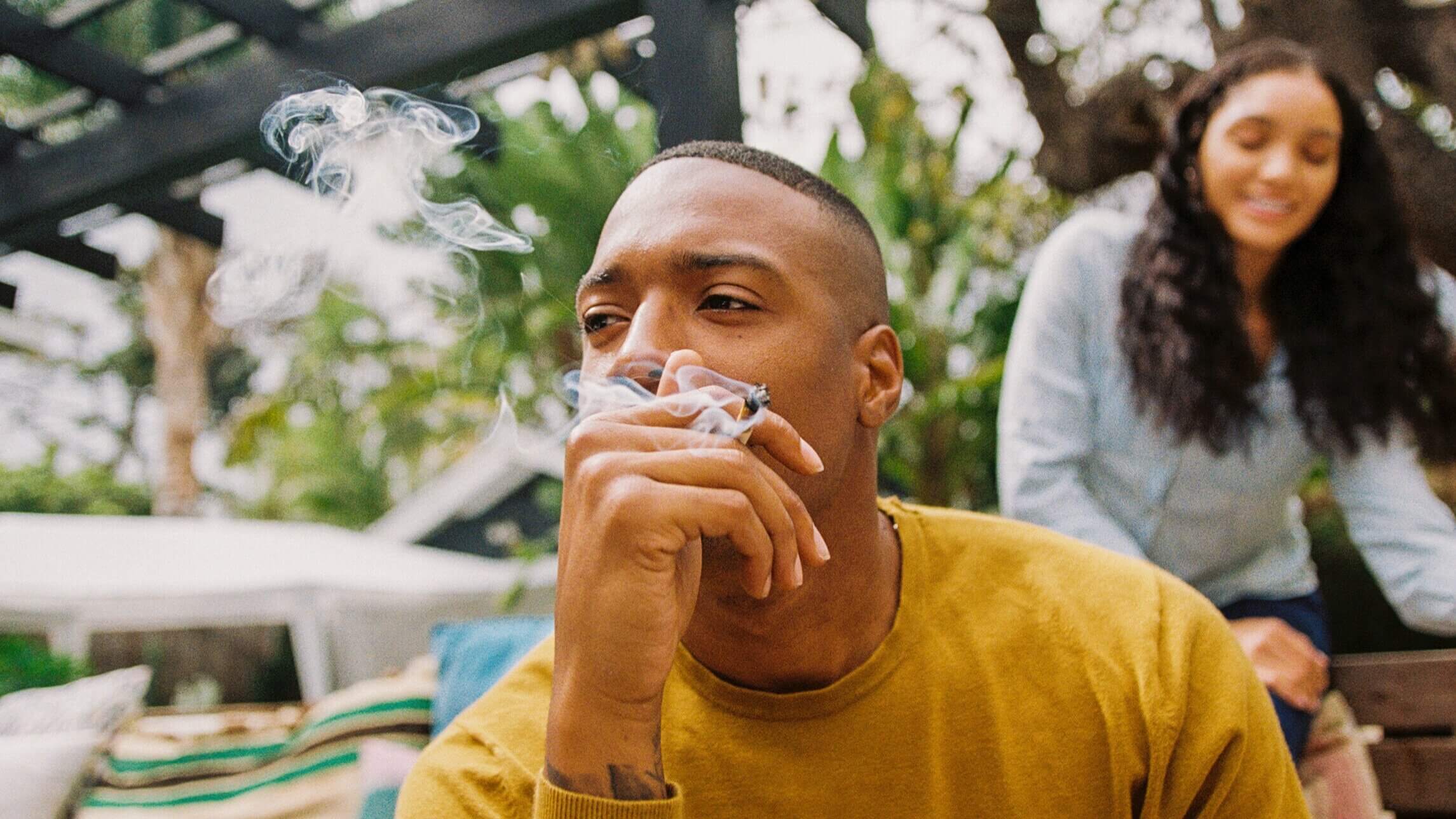
Happy 420 everyone, the international day of smoking cannabis and celebrating our favorite plant. If you’ve ever stopped to wonder why 4:20pm became the time to smoke weed, then read on as we debunk some theories and explain the true origin.
Some have linked Bob Dylan to the infamous number
While listening to Dylan’s song “Rainy Day Women #12 & 35” you’ll hear the term “everybody must get stoned” repeated over and over again. Here’s the fun part: when you multiply 12 x 35 you’re left with the number 420. As crazy as this coincidence may seem, there’s no confirmation that Bob Dylan has any ties to 4:20.
Others believe that it’s connected to the plant itself
The cannabis plant may have over 400 chemical compounds, but it has never been confirmed that the exact number is 420.
What about the penal code?
You may have heard theories that the number is linked to the police or congress, with some claiming it’s the dispatch code for cannabis possession. This one is clearly false, as 420 is actually radio code for homicide.
The list goes on
We’ve heard it all, from the day that Bob Marley died (a quick google search can squash this one), tying to Adolf Hitler’s birthday or the clocks in Pulp Fiction. But what’s the real story behind 420? It all started back in 1971 with some high school kids in San Rafael, California. They referred to themselves as “The Waldos” and used the term “420 Louis,” to say that at 4:20pm they would meet by the Louis Pasteur statue to smoke.
As it turns out, one of these kids’ older brothers was friends with a member of the Grateful Dead, and they began smoking with the band at their rehearsal studio in San Rafael. The band began using the “420”, and it quickly spread amongst their fans.
The term really took off when High Times senior editor Steve Bloom noticed a flyer at a Grateful Dead concert that referenced “420” and wrote about it in the magazine. Since then, the term has grown in popularity and is now inextricably linked to consuming cannabis.
So in honor of the Waldos, make sure you’re stocked up on Goods and happy high holidays.








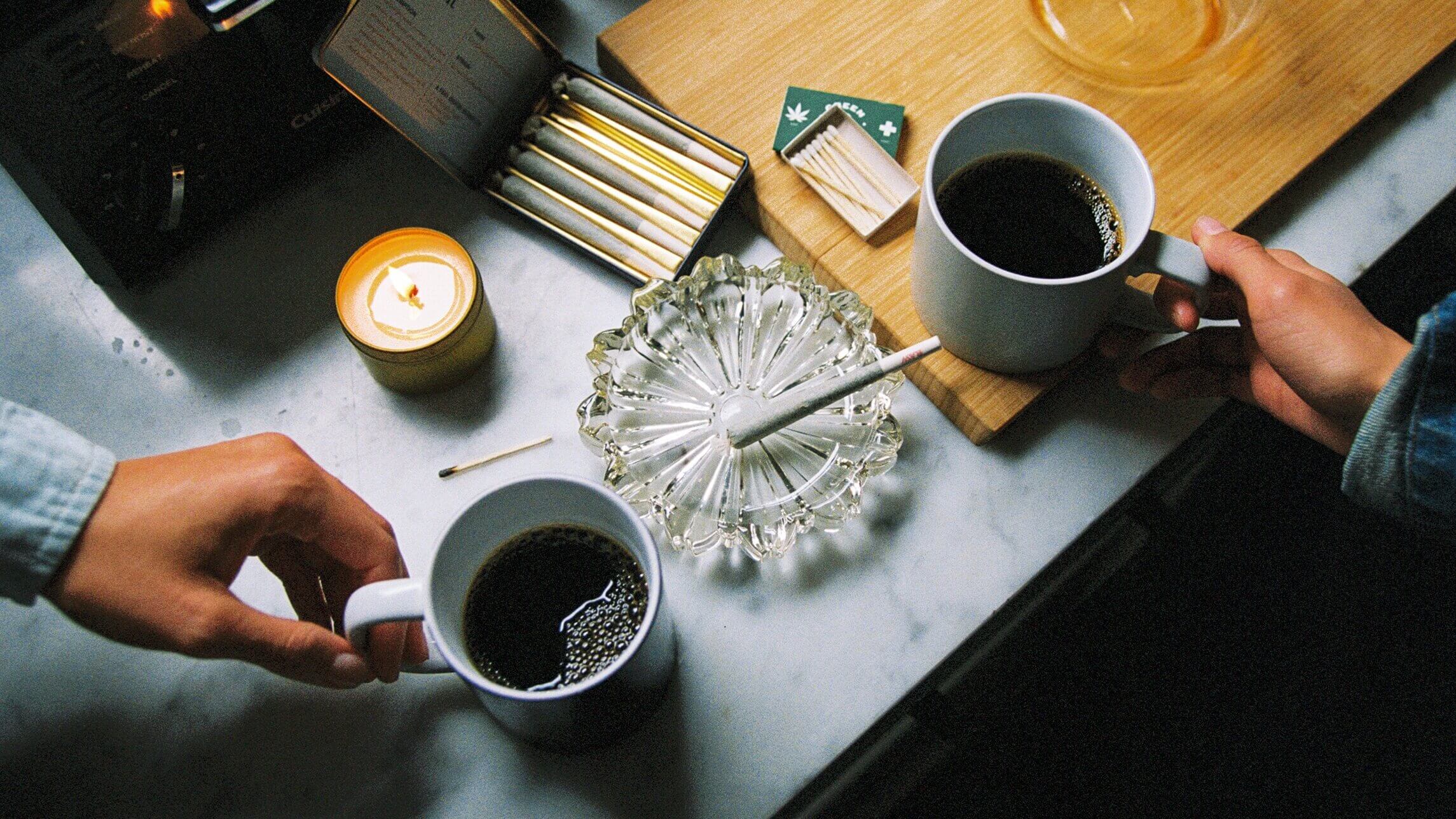
It’s no secret that cannabis has an abundance of positive effects, from easing stress to helping induce sleep. While it hasn’t always been depicted in the most positive light (we’re looking at you, Reefer Madness), we’re here to dispel the myth that cannabis consumption turns you into a zombie. Most cannabis users know that Indica strains are more physically sedating while Sativa strains provide uplifting cerebral effects, but there are a few other factors to consider when planning a productive day paired with cannabis. Keep in mind effects may differ greatly from person to person, but read on for some general tips.
Choose your strain wisely
You may already know that you want to reach for a Sativa dominant strain with invigorating effects to keep your productivity up, but keep in mind that not all strains were created equal. You’ll want a strain that energizes and uplifts you, such as The 11 or Moonshine Haze #6.
Be mindful of cannabinoids
Cannabinoids are the chemical compounds found in cannabis that imitate the compounds our bodies naturally produce, resulting in the relief of ailments such as anxiety or insomnia. When it comes to productivity, steer clear of CBN, which will lull you into a state of unbeatable restfulness, and instead reach for a high presence CBD product that can keep your energy up and promote focus.
Know your terpenes
Terpenes are the aromatic compounds that give cannabis its scent and each provide their own unique effect, such as restfulness or pain relief (learn more about them here). Similar to strains and cannabinoids, you’ll want to look out for terpenes that produce a boost of energy and invigoration. Limonene and Terpinolene are both common terpenes known for their energizing effects.
Don’t dose daringly
Low and slow is the name of the game if you’d like to keep productivity up while consuming cannabis. Regardless of how you choose to consume, be sure to allow ample time for the product to kick in before you go back for seconds.
Create a to-do list
Failing to plan means planning to fail when it comes to productivity and cannabis use. Set yourself up for success by creating an action plan before you reach for that pre-roll.
If you have a creative project that you’ve been sitting on for a while, see how smoking Spark enhances the experience. If you’ve been putting off a mundane task for a while, then try hitting Delight before tackling the dishes (your roommates can thank us later). Want to squeeze in a workout but can’t muster up the energy? There’s a strain for that too. There might be some trial and error involved, so be sure to start with some doable tasks that you can have fun and Feel Good while doing.
Got your own tips on how to use cannabis to increase productivity? Share them with us!








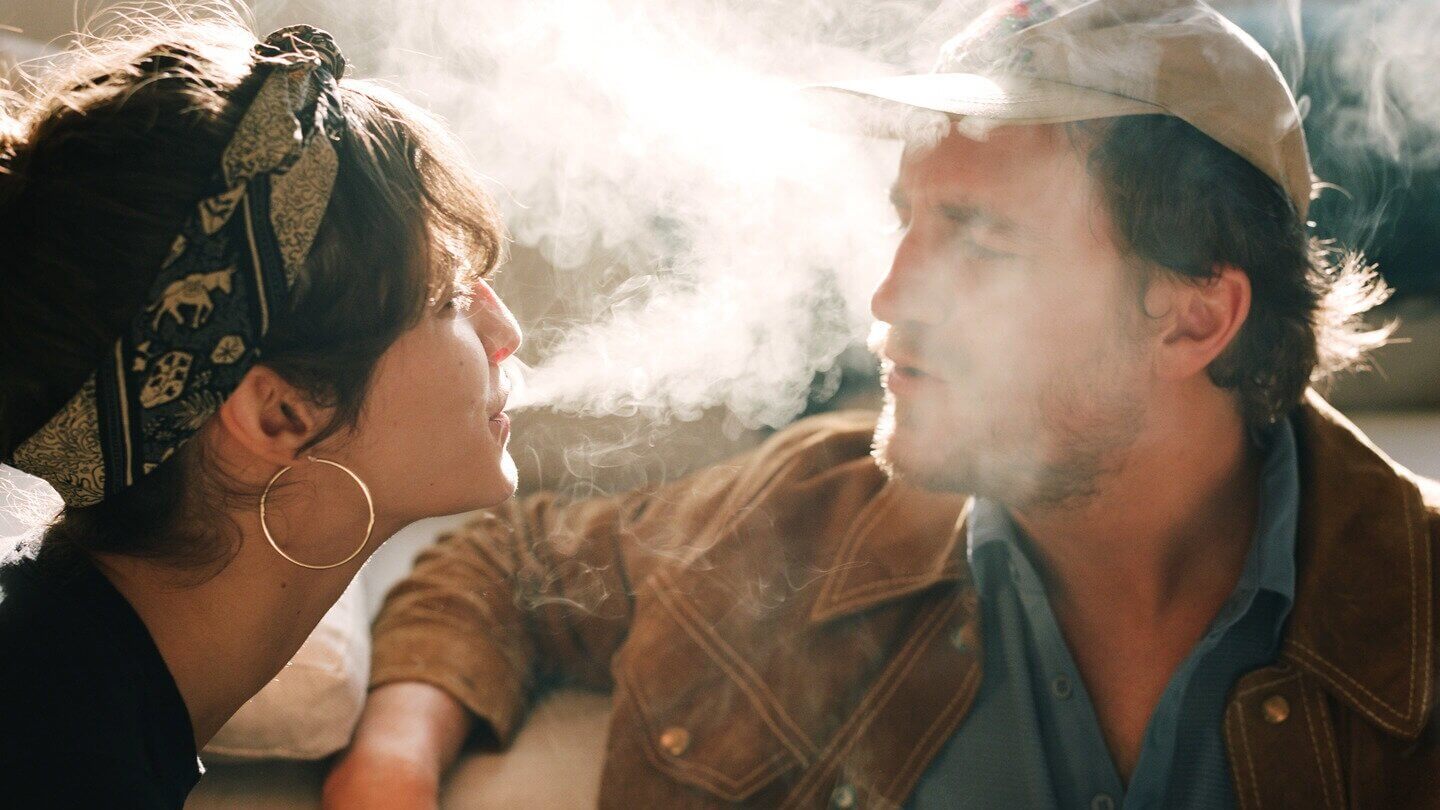
Do’s and Don’ts: Asking Your Partner to Smoke with You for the First Time
One stopping factor for people who have never smoked before (or who do not smoke regularly) is that they have no one to smoke with. The stigma of cannabis is fading, but that doesn’t mean all uncertainty is eliminated when it comes to smoking the plant. But if you are curious, and looking to get your hands on the green, who better to experience it with than your partner?
Maybe one of you smokes cannabis and the other doesn’t, or you both do, or have before, but never together. Whatever your specific situation, we’re here to help you feel good about it all. If you are asking your partner to smoke with you for the first time, here are some do’s and don’ts.
Do: Be open with your communication
Communication can be the make or break of any relationship. Maybe this is something you do well in your relationship, maybe not. Here’s a chance to get better. If you want to smoke with your partner, broach the topic. Tell them this is what you want to do and why. Be direct, but don’t pressure or make them feel awkward. Something like: “Would you ever want to smoke with me sometime? I’d love to experience it with you.”
If they are immediately put off by the idea, back off. In time, maybe they’ll change their minds, but at least they know your intentions and what you want and are open to. If they seem hesitant but curious, keep talking. Let them see into your world and why you enjoy it. Bring them in by being communicative and inclusive.
Don’t: Pressure them into smoking with you
This may seem like a no-brainer, but the first time you have this conversation is important. It will set a precedent and dictate everything that is to follow. If they are unsure, and you try to convince or pressure them, get angry, annoyed, or anything negative, they will feel all of that, and it could turn them off forever.
Keep emotion out of it, listen well, and know that not everyone will want to or be open to using cannabis, just like not everyone likes to drink alcohol. Respect someone’s wishes. If you give them the space to think about it, and show them that they can trust you, maybe they’ll come around. This approach will only yield good results and it will build trust and intimacy between the two of you in the long run.
Do: Prepare yourself for a good smoke
This one is crucial. Do not smoke with your partner for the first time empty-handed, empty-headed, or scrambling to find things. You can wing your Sunday afternoon but do not wing this. Preparing yourself properly will depend on how you’re consuming your cannabis. Are you smoking flower? What are you using to smoke: a bowl? Bong? Vape pen? Are you eating cannabis-infused chocolates or cookies? Each one should be taken with its own considerations.
Another option is to have a grinder at the ready. You can grind up the flower, and either roll a joint, a blunt, or a spliff (if you are both okay with tobacco). Show your partner the proper way to roll one. Pre-rolls are also becoming increasingly popular where the joint comes rolled for you, saving you time and energy.
If this is your first time smoking with your partner, be conscious of quantity. Start with a low dose and go slow. You do not need to light the world, or your partner, on fire the first time you smoke. Smoking flower out of a bowl can be nice and intimate. A vape pen generates less smoke and is highly portable because it’s thin and discreet like a pen and can easily slide in and out your pocket. High CBD strains, because they are less psychoactive might be a nice option to start with to see how your partner responds.
Have plenty of water around. They may cough, or have dry mouth from smoking. Have yummy snacks available for you both to munch on during your smoke. Cookies, brownies, chips and salsa, candy like skittles or starburst can really make the taste buds pop and enhance your high.
Smoking cannabis is about experience. This is something you are helping to create for them, so be prepared for anything. You are sharing the effects of a fascinatingly complex plant for the first time. Cherish it.
Don’t: Be overbearing
We know it’s your first time smoking together, but try to relax. Let the effects of the plant work naturally and go with the flow. Be conscious of your partner’s needs, mood, and try to anticipate, but at the same time, do not suffocate them with a barrage of questions, or the constant need to check in.
Find a good balance and read the room. If they are fully engrossed as they watch Animal Planet, let them enjoy the new experience. If they seem tired and want to sleep, no need to keep the party going. If they seem to want to talk, engage them in conversation. If they seem fidgety or unsure, check in. While they should enjoy themselves how they want to, remember this is their first time, so they might want or need some guidance too.
Regardless of whether this is your first time, don’t dote on someone. No one wants to be treated like a child who can’t move or think for themselves. If they seem like they are one puff away from comatose, they’ve probably smoked too much. Go slow. Your tolerance is not their tolerance. If you want them to smoke with you again, it’s best to respect their limits and make everything as smooth as possible and that includes knowing when to check in, and knowing when to let things happen.
In honesty, being high shouldn’t require any different logic than not being high does, but it’s good to think about these things beforehand.
Do: Make them feel comfortable
You are their confidant, teammate, buddy, lover, guide. They are getting high with you, someone who can support them.
It’s best to choose a location you aren’t going to leave anytime soon. Choose somewhere comfortable, preferably the privacy of your own home, where you aren’t going to be interrupted or bothered. There’s always a chance, but It’s likely they aren’t going to want to go out into the world high.
Do you have two hours? Five? You’ll want to start slow of course, but knowing how much time you have will help you decide what to smoke and how much. One-on-one is best for first-timers unless you have a third party you both love and trust. But since this is your first time, make it special and intimate for the two of you.
Smoking cannabis can make our minds work in ways we never imagined. If you’re both having fun and feeling comfortable, chances are it can lead to sex. Maybe you find yourself cuddling on the couch together after an hour. Maybe you are seeing such a beautiful side of your partner you can’t keep your hands off them. Maybe you’re making out or giving each other soft, tender kisses. If you’re making them feel comfortable, they’ll open up more, you’ll both learn more about the other, and your relationship will see immediate positive effects.
Don’t: Be reckless or inconsiderate
That means no smoking and driving. Or smoking at work, or in preparation for it. Don’t antagonize anyone or cause trouble. Be especially cognizant of your surroundings and how your actions will affect those around you. When more cities like Los Angeles open their public consumption lounges, it’s good to consider these do’s and don’ts when that time comes.
Do: Connect
One of the most spectacular things about cannabis is its psychoactive element. Highs can be consistently the same, or your experiences can differ greatly from smoke to smoke. While alcohol is a social lubricant, cannabis can be seen by some as a wisdom lubricant. The plant can take your mind to places it’s never been before. You’ve thought about something the same way your entire life and then suddenly you seen an entirely different side of the equation.
Share these connections with your partner. Recount your first time smoking. Use the activity as a chance to go deeper, to put your beautifully complicated lives in slow motion so you can think about things from an entirely different plane.
Do: Introduce them to something new
That documentary about the planets you’ve been wanting to watch? The 500 piece puzzle that is collecting dust in the closet? Better yet, how about music? Play them music you know they like, but also music they don’t like, or they don’t think they like. What better time to expose them to newness than when their mind is open. Some excellent weed culture music could be:
Pink Floyd’s “Dark Side of the Moon”
David Bowie
The Doors
Janice Joplin
Tame Impala
How about television and movies? Weeds, Friday, and Pineapple Express are all certain to bring on the giggles.
Smoking with your partner for the first time could be many things: awkward, scary, exposing. But it also has the potential to be remarkable. These do’s and don’ts are meant to act as a guide for first-timers and veterans alike. They may not all work for you. You may come up with some of your own.
The veteran can be a go-with-the-flow leader acting only on intuition, or they can be analytical, knowledgeable about every aspect of the experience: location, apparatus, form of cannabis. You may pitch an experience over the illusion of what getting high will be like.
Gone are the days of getting high in the back of your car parked in some dark alleyway. In many states cannabis is no longer illegal (here’s a list of which states have legalized). People are recognizing and putting aside old stigmas and embracing newer technologies.
Whether you’re going deep, and coming up with the solution to world peace, or you’re loopy, lucid, and laughing, have fun with it. Your experience is all what you make of it. And there’s a whole wide world waiting to be discovered.
If you’re looking for your closest dispensary, here’s something to get you started.








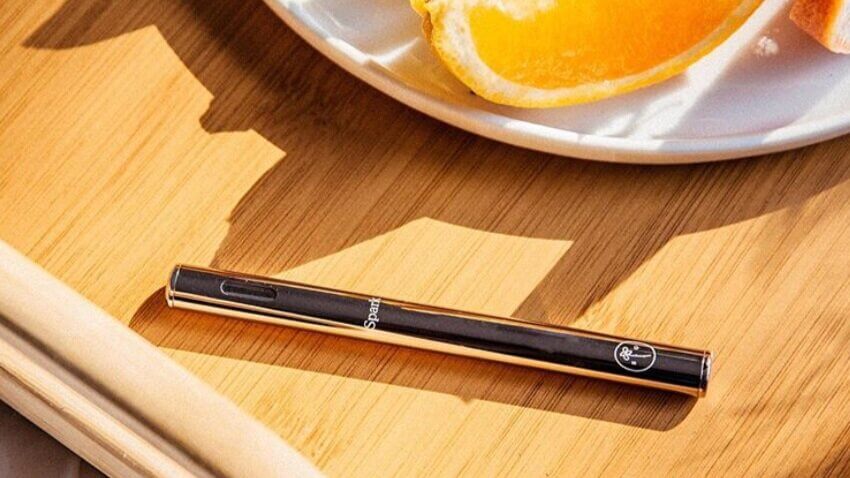
Alright, so we’ve established what terpenes are and their benefits (if you missed that part, find it here). Up next, we’re diving a little deeper into the make up of terpenes and finding the right ones for you.
Hydrocarbons
Hydrocarbons are made up almost entirely of terpenes: monoterpenes, sesquiterpenes, and diterpenes. In other words, hydrocarbons are terpenes. And terpenes are hydrocarbons. They are a large and diverse class of organic compounds, produced by every plant, flower, and even some insects.
This is where terpenes and essential oils are different. Essential oils are comprised of terpenes, much like cannabis is. Terpenes found in most essential oils are either monoterpenes and sesquiterpenes and can be classified even further.
Monoterpenes — The “Sunny” Constituent
Monoterpenes produce a warming sensation on the skin. They’ll make you think of and smell citrus. Two such examples are pinene and limonene, two of the most common constituents that make up essential oils.
Oils containing monoterpenes include:
Limonene — found in Bergamot, Carrot, Fennel, Lemon, Neroli, Orange and other Citrus Oils
Pinene — found in Coriander, Cypress, Eucalyptus, Pine, Black Pepper, Oregano
Camphene — found in Juniper, Fir, Spruce, and Pine
Sesquiterpenes — “Calming and Soothing” Constituents
Oils with high percentages of sesquiterpenes promote relaxation. These calming and soothing terpenes are perfect for relaxing after a stressful day. Essential oils for sleep (think lavender and vanilla) are another great way to help your body ease into its natural state.
Oils containing Sesquiterpenes include:
Caryophyllene — found in Lavender, Clary Sage, Marjoram
Azulene & Chamazulene — found in Chamomile
Cadinene — found in Patchouli, Lemon, Cedarwood
CBN
Speaking of promoting sleep and relaxation, remember when we mentioned CBN (cannabinol) earlier, one of the cannabinoids found in cannabis? Cannabinoids and terpenes are the ones doing the dance, creating beautiful magic and music (scents, flavors, benefits). So just what is CBN?
If THC is the all-star performer, and CBD is its chill, but no-less-cool cousin, then CBN is the sleeper of this incredibly complex cannabinoid family. And by sleeper we mean the one sitting in the back of the class, unassuming, waiting and watching before showing its true power. In a way, CBN has literally been sleeping. As THC oxidizes (exposure to oxygen over time), it converts to CBN. While leaving cannabis exposed to air like this will age the product, it will also develop higher levels of CBN.
And these CBN-rich products are on the way. Sunday Goods disposable vaporizer pens Delight, Spark, Soothe, and Rest have different ratios of the cannabinoids, including our delightfully clever CBN (found in Rest), which is sedative but not intoxicating. Most flowers contain only trace amounts of CBN at around 1%, compared to THC contents which can go as high as 30%. Even at such a trace amount, a little bit of CBN can go a long way, or at least until your head hits the pillow.
The exciting thing about CBN and cannabis in general is that THC, CBD, and CBN are just three of hundreds of cannabinoids present in the plant, and scientists are just starting to understand their effects and how they interact with each other. Only time will tell how many other ones we didn’t know were there, or were “sleeping.”
Which Terpenes are Right For Me?
The only way to know that? Start trying some! First, buy some lab-tested cannabis so you know which terpenes are actually present. When you enjoy a certain cultivar (remember these are strains) you’ve bought or noticed something you like, make note of it. Let your senses guide you. What tastes and smells good to you?
Whether you’re experimenting with terpenes, a new cannabinoid friend on the scene, CBN, or all of the above, have fun with it and find out what feels good.
Now, where to find them…
Myrcene: has a peppery, spicy, balsam smell. Where can I find it? Mango. Parsley. Hops.
Limonene: has a strong citrus odor and flavor. It’s slightly sweet but also tangy and bitter. Where can I find it? Citrus fruits.
Terpinolene: has a piney or woody aroma, with hints of citrus and herbal spice. Where can I find it? Apple. Cumin. Lilac and tea tree.
Beta-Caryophyllene: has a dry, sweet, woody, spicy clove scent. Where can I find it? Black pepper. Basil. Oregano. Rosemary. Lavender. Cinnamon.
Alpha-Pinene: is known for its pine smell! Mostly found in European and North American pines. Where can I find it? Conifer trees. Eucalyptus. Sage. Ironwort.
Humulene: neutralizes ozone in the atmosphere with sunlight via ozonolysis. A primary constituent in beer making. Where can I find it? Common sage. Ginseng. Spearmint. Ginger.








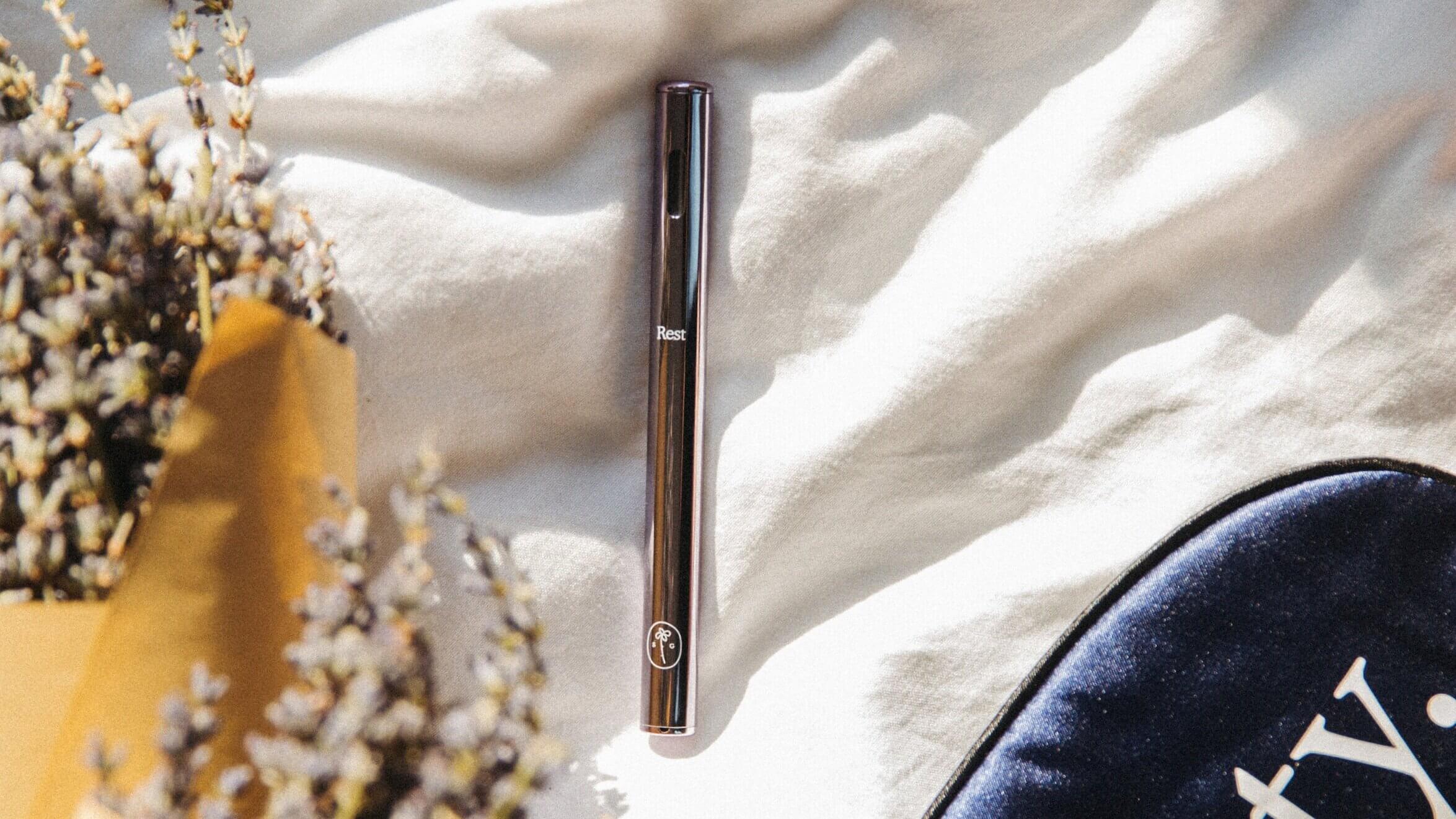
So you’re wondering what terpenes are? You might know that they have something to do with smell, and they’re good for us, but so many explanations out there seem to resemble a complicated math equation we’ve done a thousand times: we can get there in the end, but we don’t know how we got there.
Well, we’re here to help. We’ll take you through terpenes and how we can use them to help us Feel Good.
What Are Terpenes?
Terpenes are aromatic molecules found in plants that evaporate easily, quickly telling us what they smell like. The absorbing fragrance and particular psychoactive flavor in a cultivar (when you think strain, you are actually thinking about a plant’s cultivar) are determined by the predominant terpenes. Plants developed terpenes (and terpenoids) to keep away herbivores that might eat them and to attract beneficial predators and pollinators. In cannabis, these volatile molecules enhance your high while carrying numerous medical benefits.
Terpenes appeared on the cannabis scene in an interesting way, and it didn’t happen until recently. Indoor grow facilities allowed growers to breed THC-heavy genetics and a curious thing happened: these heavyweight cultivars were testing high in labs but scoring low with patients. Upon closer inspection, breeders found a lack of flavor and aroma. The missing ingredient? Terpenes!
Heightened Effects From Terpenes
Breeders and growers alike quickly found out that certain terpenes bond to cannabinoid receptors in the Endocannabinoid System (ECS) and enhance the effects of other important compounds in the cannabis plant, including the two most infamous: tetrahydrocannabinol (THC) and cannabidiol (CBD). When terpenes were accidentally removed through selective breeding, their content decreased, and the plant as a whole… just wasn’t as good.
Imagine that cannabinoids and terpenes are dance partners, boosting and regulating the effects of one another in the body’s ECS. For a long time, THC was considered the only chemical with psychoactive importance in cannabis. Nowadays, we know that other cannabinoids like CBD and CBN (which will be explained more in-depth later) along with terpenes can either increase or decrease the effects of THC and other chemicals in the body that interact with the ECS.
Terpinolene, for example, which is found in apples or cumin, induces sedation (sleepiness) and provides antioxidant, anti-cancer, and antibacterial effects. Humulene, on the other hand, found in ginseng or ginger, is an anti-inflammatory agent and hunger suppressant.
Taste and Flavor of Terpenes
Mother Nature is infallible. Did you know that the smell of terpenes aids in guiding you toward the cannabis your body wants? If a variety of weed smells good to you, it could be your body’s way of telling you exactly what it wants. And by extension, what might bring benefits.
Now that we know which terpenes can work to ease specific ailments, we can use cannabis more effectively. We can enjoy their healing qualities in many ways—after all, terpenes are found in all plants. One way to complement the positive effects from cannabis is essential oils. Prominent terpenes found in cannabis are also present in many varieties of essential oils, and can be:
Absorbed through the skin
Ingested
Diffused and inhaled for aromatherapy purposes
Tune in next time for part 2 of our terpene blog, where we’ll explore the make up of terpenes and finding the right ones to help you Feel Good.